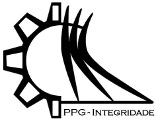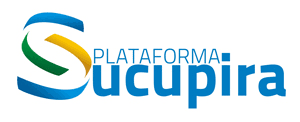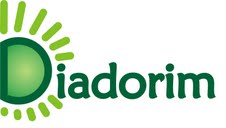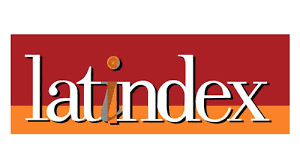UM MÉTODO MULTIESCALA UTILIZANDO FUNÇÕES DE BASE COM RESTRIÇÃO SUAVIZADA PARA A SIMULAÇÃO DO ESCOAMENTO EM RESERVATÓRIOS DE PETRÓLEO
DOI:
https://doi.org/10.26512/ripe.v2i25.20852Keywords:
Escoamento Bifásico de Água e Óleo. Reservatórios Muito heterogêneos. Método Multiescala. Funções de Base Com Restrição Suavizada.Abstract
Um dos grandes desafios da simulação numérica de reservatórios de petróleo está associado à existência de múltiplas escalas, tanto espaciais quanto temporais, sendo que, as propriedades físicas, como porosidade e permeabilidade apresentam grande heterogeneidade, podendo variar muito ao longo das diferentes escalas. Dessa forma, a partir das modernas técnicas de caracterização e modelagem geoestatística, os modelos geológicos computacionais são capazes de integrar uma grande quantidade de dados, possuindo cerca de dezenas milhões de células. No entanto, os modelos típicos de simulação fluxo em reservatórios podem lidar apenas com uma fração desse valor, tornando a simulação direta inviável em muitos casos. Neste contexto, no presente trabalho, apresentamos uma implementação do Método Multiescala Utilizando Funções de Base com Restrição Suavizada (MFBRS) para a solução implícita da equação elíptica de pressão que surge da modelagem do escoamento bifásico de água e óleo em reservatórios de petróleo, quando usamos, por exemplo, uma formulação segregada do tipo IMPES (Implicit Pressure Explicit Saturation). Para a solução do problema de saturação, utilizamos o clássico método de ponderação a montante de primeira ordem (First Order Upwind Method - FOUM).
References
Christie, M., Blunt, M.,2001. Tenth SPE comparative solution project: A comparison of upscaling techniques. SPE Reservoir Evaluation and Engineering, pp. 308”“317.
Hajibeygi, H., Bonfigli, G., Hesse, M. A., Jenny P., 2008. Iterative multiscale finite-volume method. Journal of Computational Physics, vol. 227, pp.8604”“8621.
Hou, T., Wu, X. H., 1997. A multiscale finite element method for elliptic problems in composite materials and porous media. Journal of Computational Physics,vol.134, pp.169-189.
Jenny, P, Lee, S. H., Tchelepi, H. A.,2003. Multiscale finite-volume method for elliptic problems in subsurface flow simulation. Journal of Computational Physics, vol. 187, pp. 47-67.
Jenny, P, Lee, S. H., Tchelepi, H. A., 2004. Adaptive multiscale finite volume method for multi-phase flow and transport. Multiscale Modeling & Simulation, vol. 3, pp. 50-64.
Jenny, P, Lee, S. H., Tchelepi, H. A., 2006. An adaptive fully implicit multi-scale finite-volume algorithm for multi-phase flow in porous media. Journal of Computational Physics, vol. 217, pp. 627-641.
Lunati I., Tyagi, M., Lee, S.H., 2011. An iterative multiscale finite volume algorithm converging to the exact solution. Journal of Computational Physics, vol. 230, pp. 1849”“1864.
Moyner, O., 2012. Multiscale Finite Volume Methods: extension to unstructured grids with applications in reservoir simulation. MSc dissertation, University of Science and Technology.
Møyner, O., K.-A. Lie., 2015. A multiscale restriction-smoothed basis method for high contrast porous media represented on unstructured grid. Journal of Computational Physics,vol. 304, pp. 46-71.
Shah, S., Møyner, O., M. Tene, K-A. Lie., H. Hajibeygi, 2016. The multiscale restriction smoothed basis method for fractured porous media (F-MsRSB). Journal of Computational Physics,vol. 318, pp. 1-22.
Zhou, H., and Tchelepi, H. A., 2008. Operator-based multi-scale method for compressible flow. The Society of Petroleum Engineers, vol. 13, pp. 267-273.
Zhou, H., 2010. Algebraic Multiscale Finite-Volume for reservoir simulation. Ph.D. Thesis, Stanford University.
Downloads
Published
Issue
Section
License
Given the public access policy of the journal, the use of the published texts is free, with the obligation of recognizing the original authorship and the first publication in this journal. The authors of the published contributions are entirely and exclusively responsible for their contents.
1. The authors authorize the publication of the article in this journal.
2. The authors guarantee that the contribution is original, and take full responsibility for its content in case of impugnation by third parties.
3. The authors guarantee that the contribution is not under evaluation in another journal.
4. The authors keep the copyright and convey to the journal the right of first publication, the work being licensed under a Creative Commons Attribution License-BY.
5. The authors are allowed and stimulated to publicize and distribute their work on-line after the publication in the journal.
6. The authors of the approved works authorize the journal to distribute their content, after publication, for reproduction in content indexes, virtual libraries and similars.
7. The editors reserve the right to make adjustments to the text and to adequate the article to the editorial rules of the journal.









